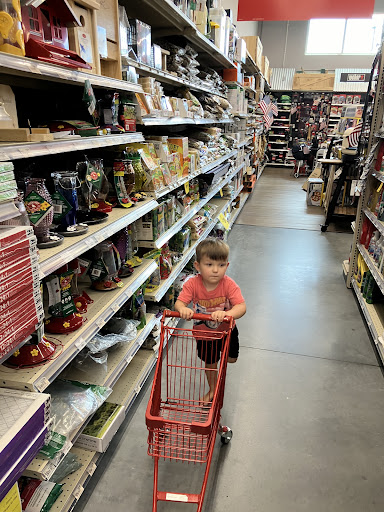Main Water Shutoff Valve: 7 Essential Tips to Avoid Disaster 2025
Why Every Charleston Homeowner Needs to Know Their Main Water Shutoff Valve
Your main water shutoff valve is the most important piece of hardware you hope you’ll never need to use. This critical valve controls all water flowing into your home from the city supply or well system.
Quick Answer: Where is your main water shutoff valve?
- Indoor locations: Near where water enters your home (basement, crawl space, garage, or utility closet)
- Outdoor locations: At the curb in a covered meter box or buried “Buffalo box”
- Look for: A lever handle (ball valve) or wheel handle (gate valve) on the main water line
- Test it: Turn clockwise to close, check that indoor water stops flowing
A burst pipe can release up to 250 gallons of water in a single day. In Charleston’s coastal climate, knowing your valve location becomes critical during hurricane season when emergency repairs might be needed quickly.
Most homeowners find they don’t know their valve location during the worst possible moment – when water is gushing from a broken pipe. The difference between minor inconvenience and thousands in water damage often comes down to how fast you can stop the flow.
Why this matters in the Lowcountry:
- Hurricane damage can cause sudden pipe failures
- Coastal moisture accelerates valve corrosion
- Emergency plumbers may not be immediately available during storms
The helpful team at Lowcountry Ace has seen countless homeowners struggle with emergency water situations. Understanding your main water shutoff valve is one of the most valuable skills any homeowner can have.
What This Guide Covers
This comprehensive guide will walk you through everything you need to know about finding and operating your home’s main water shutoff valve. We’ll cover safety considerations, provide step-by-step instructions for quick shutoff procedures, and empower you with the knowledge to handle water emergencies confidently.
Whether you’re a new homeowner in James Island, dealing with an older property in downtown Charleston, or maintaining a beach house on Folly Beach, this guide addresses the unique challenges of Lowcountry plumbing systems.
Why Every Homeowner Should Know Their Main Water Shutoff Valve
Picture this: you’re enjoying a peaceful Saturday morning when you hear rushing water from your basement. Your first instinct might be panic, but if you know exactly where your main water shutoff valve is located, you can stop the disaster in its tracks.
Water damage ranks among the most common and expensive home insurance claims nationwide. A single burst pipe can cause tens of thousands of dollars in damage to flooring, walls, furniture, and personal belongings. But homeowners who can quickly locate and operate their main water shutoff valve often limit damage to just a few hundred dollars in repairs.
Financial protection starts with that simple valve. When water is gushing from a broken pipe, every minute counts. The difference between replacing a small section of drywall versus gutting an entire room often comes down to how fast you can stop the flow.
Emergency preparedness takes on special meaning in the Lowcountry. Hurricane season brings unique challenges – power outages can affect well pumps, while storm surge and high winds can damage pipes. During Hurricane Dorian, many James Island residents learned that knowing their valve location meant the difference between minor inconvenience and major headache.
Insurance benefits might surprise you. Some insurance companies offer discounts for homes equipped with automatic shut-off systems or for homeowners who can demonstrate proper emergency preparedness.
Vacation preparation becomes a breeze when you know your valve. Whether you’re heading to the mountains for a week or spending winter months elsewhere, shutting off your main water supply eliminates the risk of returning to a flooded home.
Household training shouldn’t be overlooked. Every adult in your home should know where the main water shutoff valve is located and how to operate it. In an emergency, you might not be the one who needs to take action.
The helpful team at Lowcountry Ace has seen countless homeowners wish they’d taken these simple preparatory steps.
How to Locate Your Main Water Shutoff Valve
Finding your main water shutoff valve might seem daunting at first, but once you know what to look for, it becomes much easier. The valve is always located somewhere along the path between your water meter and your house.
Start by finding your water meter – it’s typically near the street or sidewalk in a covered box. From there, imagine drawing a line to your house. The main water line follows this path underground, and your valve will be positioned along this route.
Most homes actually have two valves. One belongs to the water utility company (near the street), and one belongs to you (closer to your house). You’ll want to focus on finding YOUR valve – the one you’re allowed to operate without calling the city.
Climate Considerations: Living in Charleston gives us advantages when it comes to valve placement. Unlike northern regions with deep frost lines, our mild winters mean valves don’t need to be buried super deep. However, our coastal humidity still influences where builders place these components.
Typical Indoor Main Water Shutoff Valve Locations
Many Charleston homes keep their main water shutoff valve indoors, especially older homes and those built on slab foundations. This protects the valve from humidity and makes it easier to access during emergencies.
Basement hunting is your first step if you have a basement. Head downstairs with a good flashlight and look along the foundation wall that faces the street. The valve usually sits within arm’s reach of where the main water line enters your home.
Crawl space trips require more determination. The valve is typically mounted on or near the foundation wall where the water line enters. Don’t be surprised if you need to crawl around a bit – builders sometimes tuck these valves into corners.
Garage and utility closet searches are common in slab-foundation homes. Check near your water heater first, since the main line often enters the house in this area. The valve might be mounted on the wall or positioned where the cold water line connects to your water heater.
Water heater proximity is a great clue. Since your water heater needs to be one of the first stops for incoming water, builders often place the main water shutoff valve nearby. Look on both sides of your water heater and follow the cold water line backward.
Inspection report treasure maps can be incredibly helpful if you still have yours from when you bought your home. These reports often include photos and detailed descriptions of valve locations.
Outdoor & Curbside Main Water Shutoff Valve Tips
Outdoor main water shutoff valve locations are becoming more popular in newer Charleston construction. These setups can be convenient once you know what to look for.
Buffalo box systems are those small covered boxes you might notice buried in yards around the neighborhood. These devices protect your valve from weather and debris while keeping it accessible. To open one, you’ll typically need a screwdriver to remove the cover. Inside, you’ll find the valve handle – usually a lever that turns clockwise to shut off the water.
Curb-side meter box exploration requires caution. Your water meter box contains two valves, and it’s important to know which one is yours. The customer-side valve (that’s yours) is typically the one closest to your house. The other valve belongs to the water utility.
Meter key tools might be necessary for some outdoor valves. These special tools fit over the valve stem and give you the leverage needed to turn stubborn valves. You can find these tools at hardware stores, and the helpful team at Lowcountry Ace on Folly Road can help you choose the right one.
Municipal rules matter in Charleston. Generally speaking, you’re free to operate valves on your own property and the customer-side valve in your meter box. However, the utility-side valve should only be operated by water department personnel, except in genuine emergencies.
Turning Off the Valve: Tools, Types, and Step-by-Step Guide
When water is gushing from a broken pipe, you don’t want to be scrambling around looking for tools or trying to figure out how your valve works. The helpful team at Lowcountry Ace has seen too many homeowners struggle with emergency shutoffs simply because they weren’t prepared.
Getting ready ahead of time makes all the difference. Keep work gloves in your toolbox for better grip and protection. An adjustable wrench or channel-lock pliers can help you turn stubborn valves. If your valve is in a dark crawl space or utility closet, a flashlight is essential.
Many outdoor valves require a meter key to operate. These inexpensive tools fit over the valve stem and give you needed leverage. You can pick one up at our Folly Road location.
For valves that haven’t been turned in years, penetrating oil can be a lifesaver. A stuck valve can often be freed up with a few drops of oil and patience.
The golden rule for all valves is “righty-tighty, lefty-loosey” – turn clockwise to close the valve and stop water flow. Never force a valve that feels stuck. Breaking the valve stem during an emergency turns a manageable problem into a much bigger headache.
Quarter-turn ball valves are the modern standard. These valves can shut off your entire water supply with just a 90-degree turn of the handle. Multi-turn gate valves are more common in older homes and require several full turns to close completely. Curb-stop valves are typically found in meter boxes and need that special meter key.
Identifying Valve Types at a Glance
Ball valves are easy to spot because they have a lever handle that looks like a small metal bar. When the handle runs parallel to the pipe, water flows freely. When it’s perpendicular to the pipe, the water is shut off. These are the workhorses of the valve world – they almost never fail and operate smoothly even after years of sitting untouched.
Gate valves look completely different with their round wheel handle that’s usually 2-4 inches across. These older-style valves require multiple turns to fully close, and you’ll know it’s completely shut when the wheel won’t turn anymore.
Curb stop valves are designed to be operated with tools, not hands. Look for a recessed stem in your meter box with a square or pentagon-shaped fitting on top. This is where your meter key attaches.
Many homeowners add visual cues to make valve identification easier. Bright tape, tags, or even spray paint can help you spot your main water shutoff valve quickly during an emergency.
Emergency Shut-Off Steps & Safe Re-Start
When facing a plumbing emergency, having a clear plan helps you stay calm and act quickly. Start by turning off power to your water heater – this prevents the heating elements from burning out when the tank drains. Then grab your gloves and head to your main water shutoff valve.
Put on those work gloves before you touch anything. Turn the valve clockwise until it stops, but don’t over-tighten it. Test that the water has stopped by checking a nearby faucet.
Once your emergency is resolved and you’re ready to restore water service, take your time with the restart process. Check for any obvious leaks before turning the water back on.
Turn the valve counter-clockwise to restore water flow, then open the highest faucet in your home first. This releases air from the system. Work your way down through the house, opening faucets from top to bottom.
Check all your fixtures for proper operation and new leaks. Finally, restore power to your water heater once you’re confident the system is working properly.
If your valve won’t turn, don’t force it. A little penetrating oil and patience often solve the problem. If it still won’t budge, call a professional plumber.
Isolation Valves vs. the Main Water Shutoff Valve
Understanding the difference between your main water shutoff valve and isolation valves is like knowing the difference between turning off all the lights in your house versus just the one in your kitchen. Both have their place, but knowing when to use which one can save you from unnecessary inconvenience during repairs.
Your main water shutoff valve is the master control – it stops all water flowing into your home from the street. Isolation valves are the individual controls for specific fixtures and appliances throughout your house.
Isolation valves are your best friends for targeted repairs. You’ll find them under sinks controlling both hot and cold water lines, behind toilets managing the cold water supply, and at your washing machine where two valves typically control the hot and cold connections. There are also isolation valves at your water heater connections.
The beauty of isolation valves is convenience. When your kitchen faucet starts dripping, you can simply turn off the valves under that sink rather than shutting off water to your entire home. This means the rest of your family can still use bathrooms, take showers, and go about their normal routines while you tackle the repair.
Here’s the catch that the helpful team at Lowcountry Ace sees all too often: isolation valves are frequently neglected and may not work when you need them most. Studies show that 8 out of 10 fixture stop valves will be seized and nonfunctional without regular exercise.
This is exactly why knowing your main water shutoff valve location remains absolutely critical, even when isolation valves are present. When that under-sink valve won’t budge and water is spraying everywhere, you’ll need to fall back on the main valve to stop the flow quickly.
Regular maintenance makes all the difference. Just like exercising your main water shutoff valve by turning it on and off periodically, isolation valves benefit from occasional operation to keep them functional.
For more comprehensive guidance on home plumbing projects and maintaining these essential systems, check out our DIY Home Improvement: Tips and Tricks for Success guide, which covers various aspects of home maintenance and repair that every Charleston homeowner should know.
Maintenance, Smart Upgrades, and When to Call a Pro
Your main water shutoff valve is like that reliable friend who’s always there when you need them – but only if you take care of the relationship. Regular maintenance keeps your valve working smoothly and prevents those heart-stopping moments when you desperately need to shut off the water and nothing happens.
Valve exercise is the most important maintenance task you can do. Twice a year – maybe when you change your smoke detector batteries – take a few minutes to turn your valve completely off, then back on again. This simple routine prevents the valve from seizing up, which is incredibly common in Charleston’s humid coastal environment.
The helpful team at Lowcountry Ace has seen countless emergency calls that could have been prevented with this simple twice-yearly exercise.
Corrosion signs are your early warning system. Our coastal air can be tough on metal components, so keep an eye out for rust, white mineral buildup, or that telltale green patina around copper fittings. These signs often indicate small leaks that are much easier to fix before they become big problems.
Automatic shutoff systems are becoming increasingly popular, especially among Charleston homeowners who travel frequently or own vacation properties. These smart devices can detect unusual water flow patterns and automatically shut off your supply before a small leak becomes a major flood.
Insurance discounts are another compelling reason to consider upgrading. Some insurance companies offer reduced premiums for homes equipped with automatic water shut-off systems.
For detailed guidance on valve replacement projects, read this guide for replacing a shut-off valve which walks you through this more advanced DIY project step by step.
Signs Your Main Water Shutoff Valve Needs Replacement
Sometimes your main water shutoff valve will tell you loud and clear that it’s time for retirement. A seized handle that won’t budge even after applying penetrating oil is usually the most obvious sign. Don’t force it – you’ll likely break the stem and create a much bigger problem.
Visible drips around the valve body or stem are red flags that shouldn’t be ignored. While small leaks around the packing nut can sometimes be fixed with simple tightening, leaks from the valve body itself usually mean the internal components are worn out.
Mineral scale buildup is particularly common in Charleston due to our hard water. If your valve looks like it’s been decorated with white crusty deposits, it may not be operating properly even if the handle turns.
Low water pressure throughout your home can sometimes be traced back to a main water shutoff valve that’s not opening fully. Before calling a plumber about pressure issues, make sure your main valve is completely open.
Smart Automatic Shut-Off Options & Remote Alerts
The future of home water protection is here, and it’s pretty impressive. Smart water shut-off systems can detect problems and take action faster than any human could, potentially saving you thousands in water damage.
Flow sensors are the brains of these systems. They learn your household’s normal water usage patterns and can detect when something’s not right. A toilet that won’t stop running, a burst pipe, or even a faucet left on accidentally will trigger an alert and automatic shutoff.
Wi-Fi control means you can monitor and control your water supply from anywhere. Heading out for a weekend trip and want peace of mind? Check your app to make sure everything’s normal, or even shut off your water remotely.
Vacation mode is a game-changer for frequent travelers. These systems can automatically shut off your water when you’re away and send alerts if any unusual activity is detected.
The investment in a smart shut-off system often pays for itself through insurance discounts and prevented damage. When you’re ready to explore these options, the helpful team at Lowcountry Ace can help you understand what’s available and connect you with qualified installers who understand Charleston’s unique plumbing challenges.
Frequently Asked Questions about Main Water Shutoff Valves
How often should I test my main water shutoff valve?
Twice a year—once in spring and once in fall. Turn the valve fully off, verify that faucets stop running, then turn it back on. If the handle feels stiff, add a little penetrating oil and try again later. Never force a stuck valve.
What if I can’t locate the valve in an emergency?
- Check your inspection report for a photo or description.
- Look in the most common spots: near the water heater, in the garage, or along the wall that faces the street.
- If it isn’t indoors, open the meter box at the curb and close the customer-side valve with a meter key.
- Still can’t stop the flow? Call Charleston Water System right away and ask them to shut service off at the street.
- While you wait, close any isolation valves near the leak to reduce damage.
Is it legal to close the city side of the meter myself?
The customer-side valve is yours to operate whenever needed. The utility-side valve belongs to the water department; only close it in a genuine emergency and notify the utility as soon as possible.
Conclusion
Understanding your main water shutoff valve isn’t just about home maintenance – it’s about protecting your family’s most valuable investment. Whether you’re dealing with a surprise pipe burst during one of Charleston’s notorious summer storms or simply heading out for a long weekend at the beach, knowing exactly where your valve is and how to use it can mean the difference between a minor inconvenience and a major disaster.
Think of your main water shutoff valve as your home’s emergency brake. Just like you wouldn’t drive a car without knowing where the brakes are, you shouldn’t live in a home without knowing how to stop the water flow. The few minutes you spend locating and testing your valve today could save you thousands of dollars and countless headaches down the road.
Make it a family affair by showing everyone in your household where the valve is located. Use bright tape or a permanent marker to label it clearly – during an emergency, you want it to be obvious even to someone who’s never looked for it before.
Practice makes perfect when it comes to valve operation. Test your valve twice a year when you’re calm and have plenty of time. This regular exercise keeps the valve working smoothly and gives you confidence that it’ll work when you really need it.
Community safety starts with individual preparedness. Share what you’ve learned with your neighbors, especially elderly residents who might need assistance during water emergencies. In Charleston’s close-knit neighborhoods, looking out for each other is just what we do.
Smart upgrades are worth considering if you travel frequently or own a vacation property. Modern automatic shutoff systems can detect leaks and stop water flow even when you’re not home. Many insurance companies offer discounts for these systems, making them a smart investment for both protection and savings.
The helpful team at Lowcountry Ace has been helping Charleston area homeowners with their plumbing needs for years, and we’ve seen how proper preparation can prevent disasters. Whether you need tools for valve maintenance, advice on smart water systems, or help selecting replacement parts, we’re here to support you with quality products and expert guidance.
Don’t wait for an emergency to find your main water shutoff valve. Take a few minutes this weekend to locate it, test it, and make sure your family knows how to use it. Your future self will thank you for the preparation, and you’ll sleep better knowing you’re ready for whatever comes your way.
For all your home improvement needs and expert advice, visit our Home Improvement Supplies: Everything You Need guide, and stop by our location at Riverland Market on Folly Road. We’re proud to serve James Island, Folly Beach, and the greater Charleston community with the tools and knowledge you need to keep your home safe and well-maintained.
Remember – a prepared homeowner is a confident homeowner. Take control of your home’s water system today, and enjoy the peace of mind that comes with being ready for anything.
Lowcountry Ace Hardware: Your one-stop shop for home improvement. We offer quality products from trusted brands and expert advice from our experienced staff. Located on James Island, visit us for tools, hardware, fishing gear, power tools, building materials, grills & smokers, electrical and plumbing supplies, and more.
















